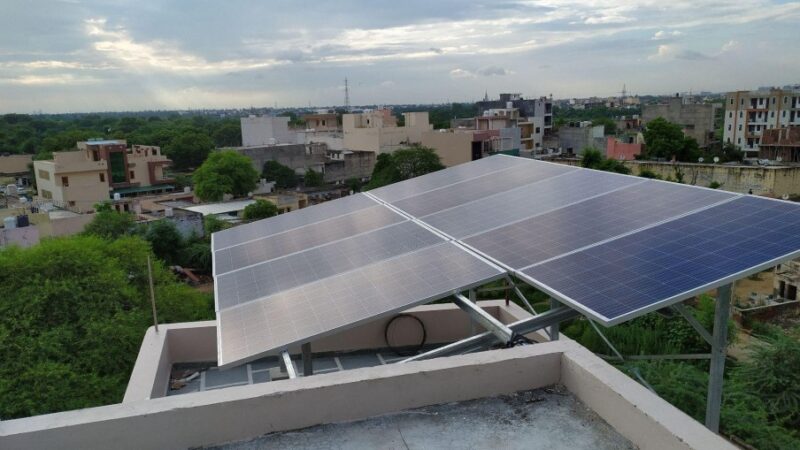Your Renovation Budget: Where to Save and Where to Invest

Renovating a home is exciting, but it can also feel overwhelming, especially when you’re trying to stick to a budget. Suddenly, you’re looking at tile prices, wondering if you really need that fancy kitchen tap, and asking yourself: “Should I splurge here, or save and move on?”
That’s why many homeowners choose to work with a renovation contractor from the start. A good contractor can also help you plan realistically, prioritise what matters most, and avoid costly mistakes along the way.
This guide walks you through that — in a practical, simple way — so you can get the most out of your renovation budget without second-guessing every decision.
First: Set a Budget That Works for You
Before you start picking tiles or sofas, take a step back and look at the big picture. Ask yourself:
- How much am I truly comfortable spending?
- Is this a full-home renovation or just a few rooms?
- Do I want to renovate all at once or in phases?
Once you’ve got a rough number in mind, break it down. Here’s a basic way to do it:
- 30–40% for built-ins and carpentry
- 20–25% for electrical, plumbing, and lighting
- 15–20% for flooring and surfaces
- 10–15% for furniture and styling
- The rest for contingency (because there will be surprises)
Now let’s dive into where it makes sense to spend and where you can save without losing out on quality.
Where It’s Worth Investing
These are the areas where paying a little more up front can actually save you money (and headaches) down the line.
1. Anything Structural or Behind the Walls
Think: plumbing, wiring, waterproofing, and ceilings. You won’t see these parts once the renovation is done, but they keep your home safe, functional, and future-proof.
Why it matters: Cutting corners here can lead to leaks, power trips, or even mould. Re-doing this later? Way more expensive.
Good examples to invest in:
- Electrical rewiring (especially for older homes)
- Quality piping and plumbing work
- Proper waterproofing in bathrooms and wet kitchens
- Ceiling works, especially if you’re installing air-conditioning
2. Built-in Cabinets and Smart Storage
In compact city homes, good storage is everything. Well-designed built-ins can maximise space, hide clutter, and make your daily life easier.
Why it matters: They’re used daily, and bad carpentry wears out fast. Going for quality materials and good workmanship will save you repair costs in the future.
Worth investing in:
- Kitchen cabinetry with durable hinges
- Floor-to-ceiling wardrobes with proper compartments
- Custom shoe or utility cabinets
- Hidden storage under benches or beds
3. Flooring and Surfaces You Walk On Every Day
Floors take a beating — kids, pets, heels, spills. Choosing materials that are easy to clean and built to last is a smart, long-term move.
Why it matters: Cheap flooring may crack, warp, or stain easily, and replacing it later is a major hassle.
Smart choices include:
- High-quality vinyl (great for budget-conscious renovations)
- Engineered timber for a warm, classic look
- Porcelain tiles for wet areas
4. Kitchens and Bathrooms Fixtures
Taps, sinks, showerheads, and cabinets — these parts get used daily and should feel sturdy and well-made.
Why it matters: Low-cost fixtures often break quickly or leak. You don’t need gold-plated taps, but reputable brands are worth it.
What to invest in:
- Soft-close drawers and hinges
- Durable countertops (quartz is a solid pick)
- Water-saving but high-pressure taps and rain showers
5. Lighting Design
Lighting affects how your space looks, feels, and functions. Good lighting = better mood, better focus, and even better sleep.
Why it matters: Poor lighting makes even the best furniture look dull. Layered lighting helps your space feel warm and flexible.
Spend more on:
- Dimmable overhead lighting
- Task lighting in kitchens or workspaces
- Stylish pendant lights or statement pieces in main areas
Where You Can Save (Without Compromising Style)
Now, here’s the fun part — finding areas where you don’t need to spend a fortune to get a great result.
1. Wall Paint and Basic Finishes
A fresh coat of paint goes a long way. Unless you’re doing a feature wall or textured paint, you can stick to simple, reliable options.
Pro tip: Neutral tones age well and give you more styling flexibility later.
Save by:
- Using emulsion paint in high-coverage brands
- Keeping walls clean and simple, especially in rental units
- Skipping over-the-top wall panels unless it’s a focal point
2. Loose Furniture
You don’t need to splurge on everything. Spend more on a comfy sofa or bed, but for things like side tables or dining chairs, look for budget-friendly options.
Pro tip: Pair affordable items with standout décor to elevate the look.
Save on:
- Entryway benches, coffee tables, and stools
- TV consoles and shelves (opt for ready-made pieces)
- Rugs and curtains from local stores or online
3. Décor and Accessories
You don’t need to buy everything at once. Start simple and add over time. Your space will feel more personal that way, too.
Budget-friendly ideas:
- DIY artwork or framed prints
- Throw pillows and textured rugs
- Plants (real or realistic faux ones)
4. Trendy Features or Overly Custom Items
It’s tempting to jump on design trends — bold tiles, LED panels, funky colours — but trends come and go. Unless you absolutely love it, stick to timeless basics and express your style with movable décor.
Pro tip: Go bold in smaller areas (like a backsplash), not across the whole house.
Trying to make every ringgit count during your home renovation? Here’s a recap of where smart investments really pay off — and where you can afford to cut back without sacrificing quality or style.
Quick Summary: Where to Spend and Where to Save in Your Renovation Budget
Trying to make every ringgit count during your home renovation? Here’s a recap of where smart investments really pay off and where you can afford to cut back without sacrificing quality or style.
Where to Spend a Bit More
- Hidden essentials: plumbing, wiring, waterproofing, and ceilings. These are the backbone of your home. You won’t see them after the reno, but if they fail, the consequences are costly. Fix it right the first time and enjoy long-term peace of mind.
- Built-in storage and carpentry. Daily-use items like kitchen cabinets, wardrobes, and utility shelving need to be durable. Custom pieces that fit your space perfectly can add function and value for years to come.
- Floors and everyday surfaces. You walk on them every single day, so don’t go too cheap here. Durable flooring can handle kids, pets, spills, and wear and won’t need replacing any time soon.
- Kitchens and bathroom fittings. These fixtures work hard on taps, sinks, showers, and cabinets. Go for good brands that combine functionality and style. Investing here helps avoid leaks, damage, or premature replacements.
- Lighting that does more than just brighten. Good lighting transforms a space. Layer your lighting (ambient, task, accent) and invest in flexible options like dimmable LEDs and stylish fixtures in key areas. It’ll instantly elevate the whole room.
Where to Save (Smartly)
- Wall paint and simple finishes. Stick to classic, clean paint in reliable brands. Avoid spending too much on trendy finishes unless it’s a small feature area. Neutrals age well and leave room to play with accessories.
- Loose furniture for secondary areas. Splurge on your main sofa or bed, but go budget-friendly for things like coffee tables, benches, or dining chairs. Mix-and-match pieces still look great with the right styling.
- Decor and accessories. Styling your home doesn’t need to cost a fortune. Add personality over time with throw pillows, rugs, framed prints, and plants. You can refresh these easily down the line without touching your core reno.
- Trendy or over-customised design features. While it’s tempting to jump on Pinterest trends, these can quickly feel dated. Instead, use bold styles in smaller doses (like a backsplash or powder room), and keep your main features timeless and flexible.
Final Thoughts
Renovating a home — whether in a high-rise KL apartment or a landed terrace — doesn’t have to be all or nothing. You can have a beautiful, functional home without spending beyond your means.
The trick? Be clear about your priorities. Spend on what matters most to your lifestyle. Save on things that are easy to swap out later.
And if you’re working with a renovation contractor or interior designer in Kuala Lumpur, be upfront about your budget. The right professionals will help you plan smart, avoid common pitfalls, and stretch your renovation ringgit to the max.







